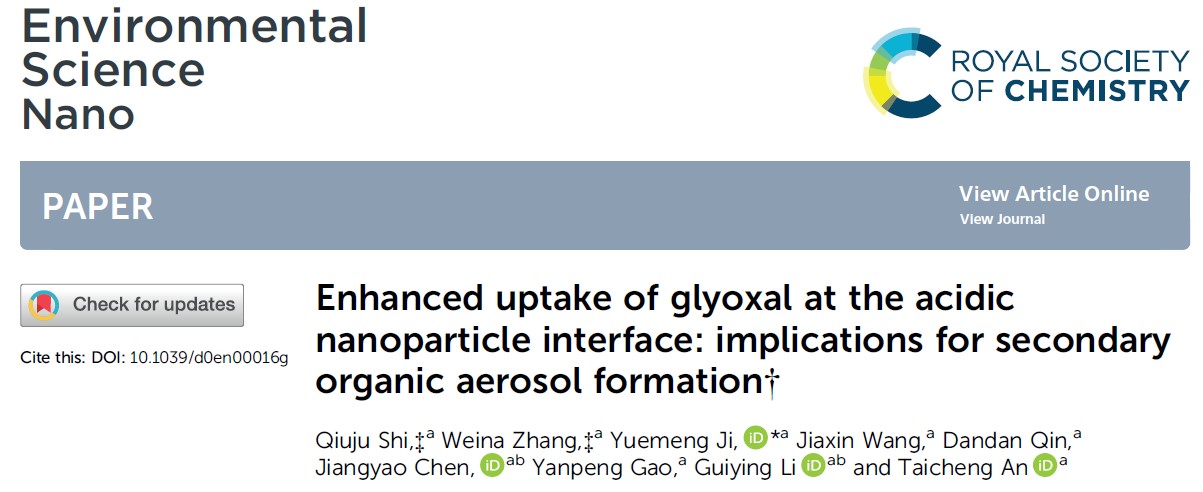近日,广东工业大学环境健康与污染控制研究院、环境科学与工程学院硕士生石秋菊和博士后张维娜等在乙二醛的非均相反应机理方面取得最新研究进展,研究成果以“Enhanced uptake of glyoxal at the acidic nanoparticle interface: implications for secondary organic aerosol formation”为题发表在《Environmental Science: Nano》杂志上。

乙二醛(Glyoxal,GL)具有丰富的生物源和人为源,是形成二次有机气溶胶(Secondary organic aerosol,SOA)的重要前驱体。该工作结合经典分子动力学和量子化学方法,探讨了GL从气相到液相的非均相吸附过程及其在液相中的水合反应机制。结果表明GL的羰基官能团在吸附过程优先进入气-液界面,并在气-液界面处具有稳定性,说明气-液界面可为GL的大气化学反应提供稳定场所。同时气-液界面吸附和累积GL的能力随着气溶胶的酸性增加而增强,这有利于水合反应在气-液界面有效进行。当GL进入气溶胶内部后,与中性液滴中的直接水合反应及水参与的间接水合反应相比,酸性气溶胶内部的水合反应能垒显著降低,同时反应速率分别提升23和10个数量级,间接促进GL在气-液界面的吸附。因此,酸性气溶胶加强GL在气-液界面的非均相吸附,这将有利于GL在气-液界面形成二聚体,从而有效促进SOA的生长。研究建议在评估GL对SOA的贡献时需要考虑气-液界面化学的影响。该杂志属于我校TOP类国际高水平学术期刊!
论文网址
https://doi.org/10.1039/D0EN00016G
论文英文摘要
ABSTRACT
Glyoxal (GL) represents an important precursor of a secondary organic aerosol (SOA) and has broad biogenic and anthropogenic sources, but the interfacial chemistry of GL contributing to SOA formation is uncertain. Here, we performed molecular dynamics (MD) simulations and quantum chemical (QC) calculations to examine the interfacial process of gaseous GL on aqueous nanoparticles, including probing the GL attraction to the nanoparticles, uptake at the air-nanoparticle interface, and the hydration reaction within the nanoparticles under neutral and acidic conditions. The MD simulations show that the carbonyl O-atom of GL exhibits a preferential orientation to the air-nanoparticle interface. The acidic nanoparticle interface displays a preference for the uptake of gaseous GL relative to the neutral nanoparticle interface, showing that the presence of sulfuric acid (SA) enhances the adsorption and accommodation for GL. In addition, SA accelerates the aqueous reaction of GL inside the interior region of the nanoparticle, which indirectly promotes the uptake at the nanoparticle interface. Our results reveal the significantly enhanced uptake of GL at the acidic nanoparticle interface, highlighting the necessity to account for the interfacial process when assessing SOA formation.